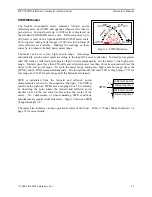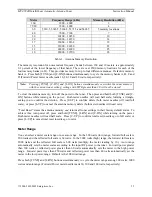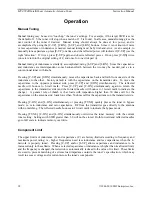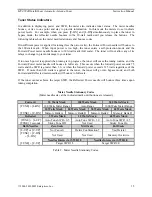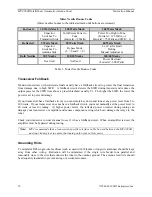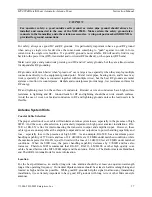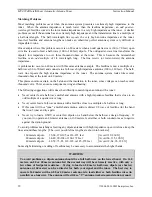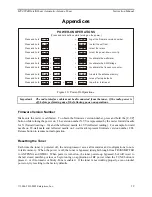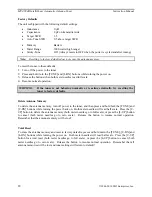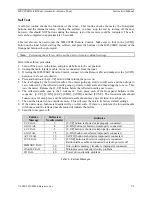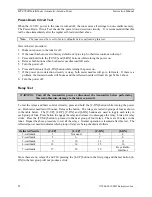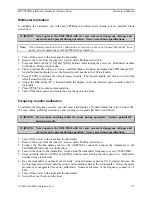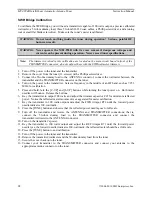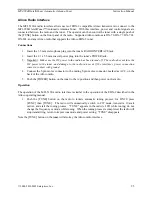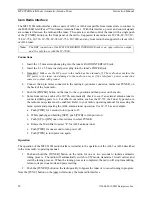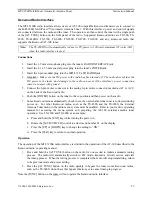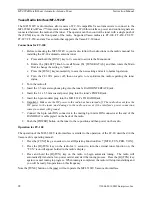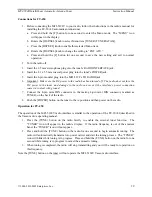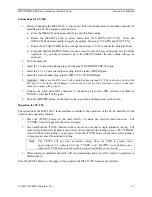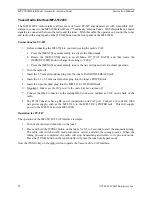
MFJ-994B IntelliTuner Automatic Antenna Tuner
Instruction Manual
©
2004-2010 MFJ Enterprises, Inc.
17
CAUTION
For operator safety, a good outside earth ground or water pipe ground should always be
installed and connected to the case of the MFJ-994B. Make certain the safety ground also
connects to the transmitter and other station accessories. A wing-nut post marked GROUND is
provided for ground connections.
For safety, always use good DC and RF grounds. It is particularly important to have a good RF ground
when using a single wire feeder since the tuner needs something to "push" against in order to force
current into the single wire feedline. If a good RF ground is not available, RF will usually find its way
back into the power line (RFI), transmitter audio circuits (RF feedback), or the operator (RF burns).
Metal water pipes and ground rods provide good DC and AC safety grounds, but they are almost useless
for dependable RF grounding.
RF grounds work much better when "spread out" over a large area, especially when they employ multiple
connections directly to the equipment ground point. Metal water pipes, heating ducts, and fences may
work (especially if they are connected together with multiple wires), but the best RF grounds are radial
systems or multi-wire counterpoises. Radials and counterpoises provide large, low resistance surfaces for
RF energy.
RF and lightning travel on the surface of conductors. Braided or woven conductors have high surface
resistance to lightning and RF. Ground leads for RF and lightning should have wide smooth surfaces.
Avoid the use of woven or braided conductors in RF and lightning grounds unless the lead needs to be
flexible.
Antenna System Hints
Coaxial Cable Selection
The proper selection of coax cable will minimize antenna system losses, especially in the presence of high
SWR. And the coax cable selection is particularly important in high power amateur installations. RG-
58/U or RG-8X is fine for interconnecting the transceiver output and amplifier input. However, these
cable types are unacceptable at the amplifier output and tuner output due to power handling capability and
loss – especially loss in the presence of high SWR. As an example, RG-58/U has a maximum power
handling capability of 570 watts and loss of 2.4 dB/100 feet at 28 MHz under matched conditions, while
the maximum power for RG-8X is just 360 watts with a loss of 1.9 dB/100 feet at 28 MHz under matched
conditions. When the SWR rises, the power handling capability decreases by 1/
√
SWR and loss also
increases. Therefore MFJ recommends that RG-8/U, RG-213, LMR-400 or other high quality coax
cables be used between the MFJ-994B output and the antenna. Refer to The Radio Amateurs Handbook
and The ARRL Antenna Book for more information.
Location
For the best performance, an end-fed longwire wire antenna should be at least one quarter-wavelength
long at the operating frequency. Horizontal dipole antennas should be at least a half-wavelength long and
located as high and clear as possible. While good RF grounds help the signal in almost any transmitting
installation, it is extremely important to have good RF grounds with long wire or other Marconi-style
antennas.
Содержание IntelliTuner -994B
Страница 44: ...MFJ 994B IntelliTuner Automatic Antenna Tuner Instruction Manual 2004 2010 MFJ Enterprises Inc 38 Note ...
Страница 45: ...MFJ 994B IntelliTuner Automatic Antenna Tuner Instruction Manual 2004 2010 MFJ Enterprises Inc 39 Note ...
Страница 46: ...MFJ 994B IntelliTuner Automatic Antenna Tuner Instruction Manual 2004 2010 MFJ Enterprises Inc 40 Note ...









